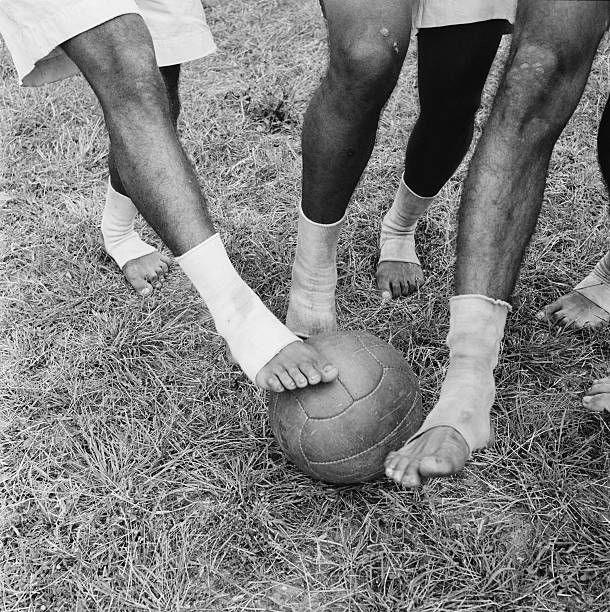
The story of the 'Bare-Footed' Indians who rejected the opportunity to play at the 1950 World Cup...
➡️ Despite 8/11 players being barefoot, they nearly knocked out France in the 1948 Olympics
➡️ Beat Ajax 5-1 in a European tour
[Thread]
#India #WorldCup2022 #France
➡️ Despite 8/11 players being barefoot, they nearly knocked out France in the 1948 Olympics
➡️ Beat Ajax 5-1 in a European tour
[Thread]
#India #WorldCup2022 #France

The 1948 London Olympics was India's first major international tournament, where a predominately barefooted Indian team (containing Sikhs, Hindus and Muslims) lost 2–1 to France, failing to convert two penalties.
The Indian team was greeted and appreciated by the crowd for their sporting manner. "The French had been given a run for their money – and that, too, by the barefooted Indians!", the British media expressed.
At a press conference, shortly after, the Indians were asked why they played barefooted. The ever witty then Indian captain Talimeren Ao said, "Well, you see, we play football in India, whereas you play BOOTBALL!" 

The question was not about affording shoes - it was a matter of Indian players finding it comfortable playing without shoes. Nevertheless the weather in British conditions was cooler and wetter than what the players were used to back home.
The decision of wearing shoes had to made and the Indians finally settled on wearing shoes if the conditions were wet (rainy) and if they had to play on soft grounds and when the conditions were dry, most players opted to play without shoes and instead wore bandages. 

Indian footballers’ bravery and brilliance in bare feet at the 1948 Olympics earned them no less a fan than Princess Margaret, the younger sister of Queen Elizabeth II.
So much so that King George VI invited the team to Buckingham Palace.
So much so that King George VI invited the team to Buckingham Palace.

Encouraged by the accolades and the positive reception to India's football, the AIFF decided to extend the tour with some friendlies across Europe. Over the next several weeks the team would play some matches that would only enhance its growing reputation.
In the Netherlands India lost 1–2 against Sparta Rotterdam but stunned Ajax Amsterdam featuring the legendary Rinus Michels (a striker) by 5–1, two days later.
Back in England and Wales, it put together a string of victories over several teams including @themikesfc.
Back in England and Wales, it put together a string of victories over several teams including @themikesfc.

In 1950, India managed to qualify for the 1950 FIFA World Cup finals, which was scheduled to take place in Brazil; where it was drawn with Sweden, Italy, and Paraguay.
This was not due to any success on the pitch, but due to the fact that all their opponents during the qualifying round, withdrew from the pre-tournament qualifiers.
However, India themselves withdrew from the World Cup finals before the tournament was to begin. The All India Football Federation gave various reasons for the team's withdrawal, including travel costs, lack of practice time, and valuing the Olympics above the World Cup... 

Many have repeated the myth that India withdrew from the World Cup due to FIFA imposing a rule banning players from playing barefoot. In fact, FIFA offered to pay the travel expenses of the Indian team hence India withdrawing due to travel costs or being banned is incorrect. 

More importantly, India rated Olympics as bigger than World Cup since it was just the fourth edition back in 1950. Many countries adopted a similar attitude and only 13 nations made it to Brazil in 1950.
Ultimately India did not deem it fit to send a team halfway around the world via ship for a sub-par tournament. Since then, India has not come close to qualifying for another World Cup.
The Indians lined up in a 2-3-5 formation. They were renowned for their fleet-footed possession based game, lightness on their feet and courage... even bare-footed, they did not shirk even the heaviest of challenges...
Look at the names as well, a real diverse unit!
Look at the names as well, a real diverse unit!

• • •
Missing some Tweet in this thread? You can try to
force a refresh
















